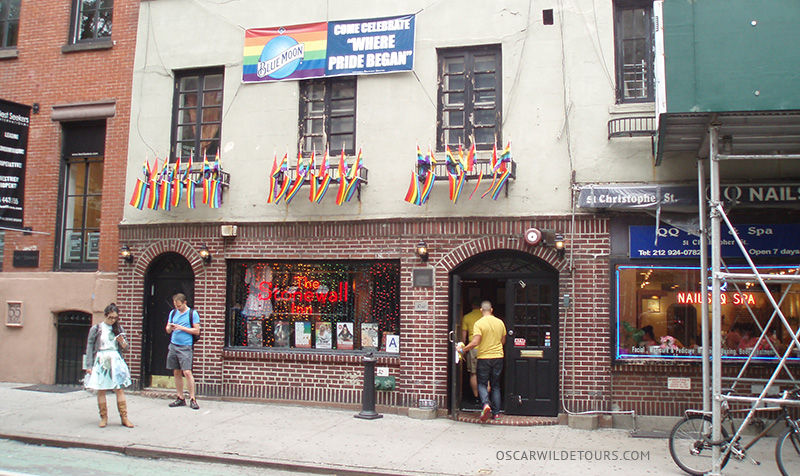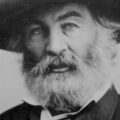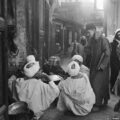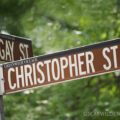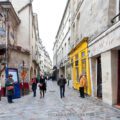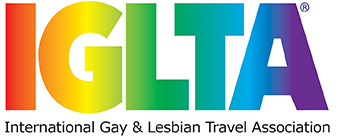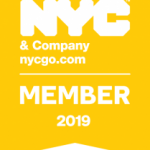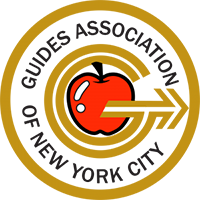In the last few weeks, I’ve been planning a gay history tour of New York for the spring for Oscar Wilde Tours. New York is truly one of the great gay cities, along with London, Paris, Berlin, Florence, or Athens. Ever since the days before the Civil War, when Walt Whitman hung out with his Bohemian friends at Pfaff’s Beer Cellar at Broadway and Bleecker, it has been a major center of gay life.
It is true that the city often tried to repress it, but since the late 19th century, the city has had drag shows and gay baths and bars and cafés which, if not exactly gay, tolerated openly gay behavior—or even used it as an attraction for customers. And the city has been a mecca for gay people from other, more repressive parts of America and home to an astonishing list of famous and fascinating LGBT personalities and talents, from Whitman to Bessie Smith to Cole Porter, Rudi Nureyev, Andy Warhol, and so on.
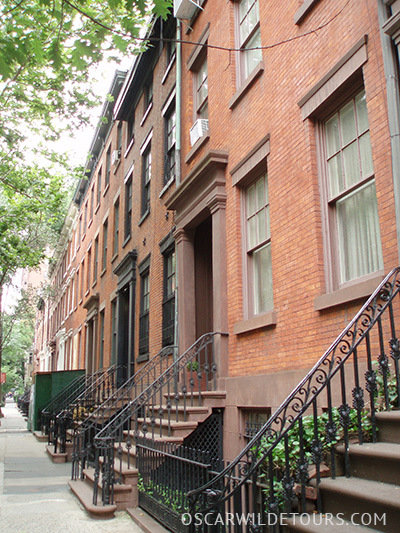
But there is also more gay history right in the square itself. The theater at 1 Sheridan Square (now home to the Axis Theater Company) for example, is a gay history site several times over. In 1938 the space became a bar called Café Society, one of the rare places in the city where whites and blacks could mix, both on the stage and in the audience. Such places, known as ‘black and tans’, tended to also attract and tolerate a mixed audience in other senses, and Café Society—suggestively nicknamed “the right place for the wrong people”—was a hotspot for what were called “long-haired men, short-haired women, and those not sure exactly what they are.” There is a lot to tell about Café Society. The opening act, for instance, was an unknown singer called Billie Holiday, who made her name singing there for 2 years. Another singer in early years was Bayard Rustin, one of the great leaders of the Civil Rights movement—whose name is sadly not widely remembered because after his 1953 arrest for cruising, he was discriminated against both by opponents of Civil Rights and by the movement itself.
Café Society closed in 1950, but the theater’s gay history didn’t stop there. It was a gay dance club in the 1960s. And most importantly, in the 70s and 80s it was the home of Charles Ludlam’s Ridiculous Theater Company. Ludlam was one of the most important drag artists in American history; along with Andy Warhol, John Waters, and Harvey Fierstein, he is one of the people who brought drag shows into the mainstream, integrating drag acts back into the genres (theater and movies) that they parodied. This is where Ludlam’s plays were put on for over a decade, including his cross-over hit, The Mystery of Irma Vep, and it is also here that he gave Charles Busch, the leading drag artist in today’s theater, his first serious opportunities to perform.
And that’s just one address. New York’s gay history is richer and longer than you may have realized—as we’ll try to show on our tours….

